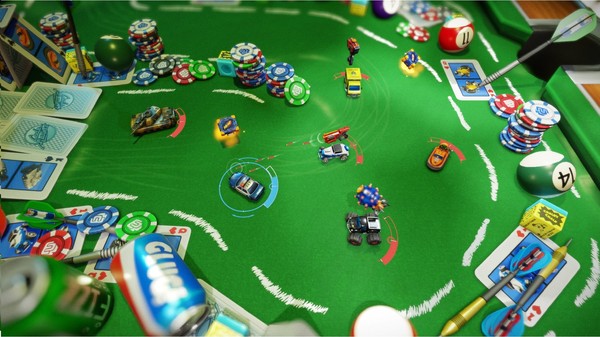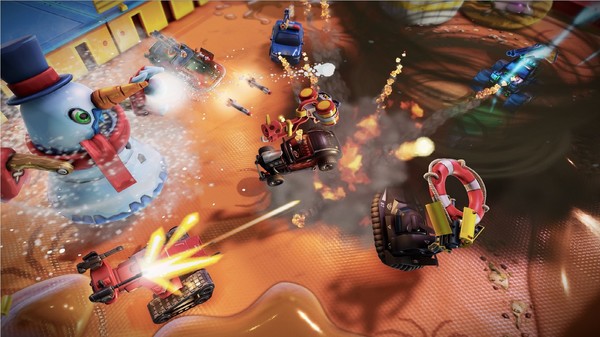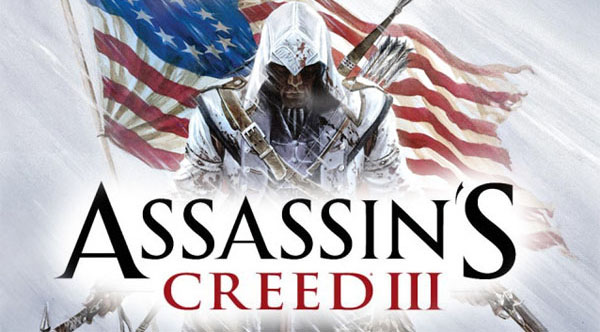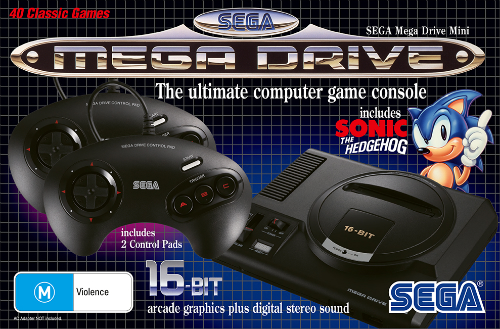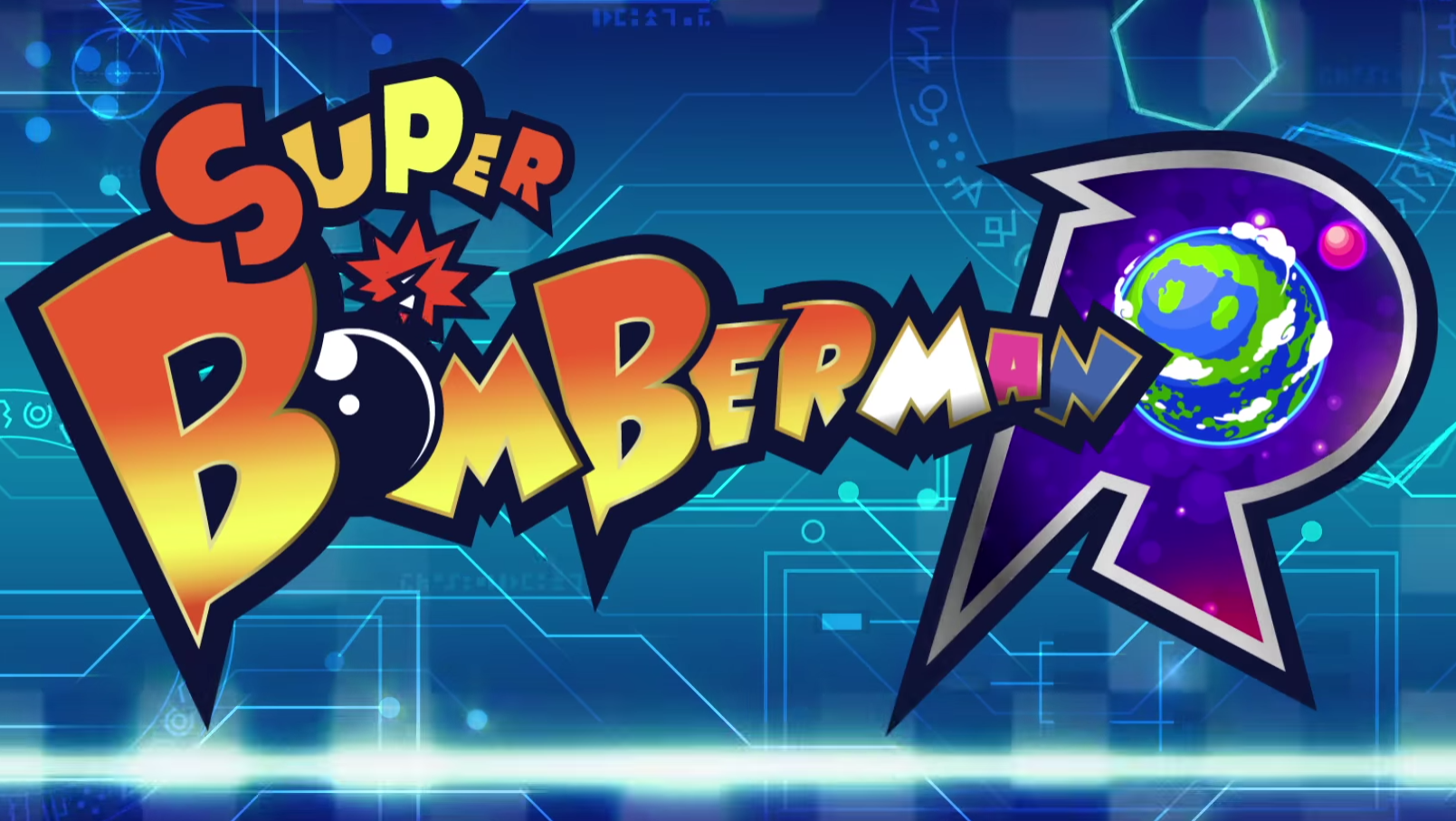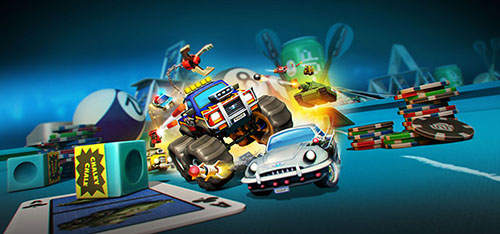
Like many who grew up in the 90’s, I have really fond memories of Micro Machines – both the toys themselves (especially the Power Rangers line), and the video games they spawned. The original games on the Sega Mega Drive, as well as the 3D entry on the first PlayStation, were a fantastic alternative to Mario Kart for madcap multiplayer racing. As the popularity of the toys dwindled, so too did the game series, and it’s been more than a decade since the last entry. However, Codemasters obviously shared some nostalgia for Micro Machines, first producing their own homage in 2014’s Toybox Turbos, and now finally getting the license to produce Micro Machines World Series. But is a name all you need for nostalgic bliss?
First off, I do have to commend the visuals in World Series. While it is clearly a budget title, the upgrade to current-gen systems actually works quite well for the Micro Machines art style, which of course sees you racing miniature versions of vehicles around appropriately-scaled tracks. That means you’ll go from messy kids’ floors to kitchen table-tops, all modelled quite well with the benefit of a tilt-shift perspective, almost like you were watching somebody’s home video of playing around with actual Micro Machines. It’s also cute how vehicles can push smaller objects around the track, now the series has the benefit of a proper physics engine.
The game itself, however, is unfortunately not quite as memorable as its visuals. World Series retains the top-down perspective from the old Micro Machines series, which when racing gives you a very narrow field of view of the track at any time, and the game is more than happy to throw tight corners at you so that you careen into a wall at every opportunity. Only by going very slowly, or via constant replays and memorisation, do you stand a chance at actually being competent at navigating any of the tracks, but to be fair, this was often the case in the original Micro Machines games as well. However, each of the vehicles, whether they’re a hot rod or a tank, do handle fairly loosely, making it just that much harder to turn with precision.
Speaking of the vehicles, Codemasters’ deal with Hasbro is made all too clear throughout almost every part of the game – from G.I. Joe branded tanks, to a constant NERF logo on-screen at all times – due to the fact that all of your power-up weapons are now related to Hasbro’s much more popular NERF brand. Have to advertise something to the kids, right? And if Micro Machines aren’t so hot anymore, it might as well be something that is. Because of that, many of the safely foam-based weapons lack the kind of impact I remember from the older games. Some do – in the game’s Battle mode, cars can be outfitted with a straight-up bloody shotgun that’s extremely satisfying to use.
However, the game is missing any kind of single-player campaign or championship mode that might increase its longevity, or further incentivise players to learn each vehicle and track’s ins and outs. Choosing any of the modes from the main menu will instantly bring up the game’s matchmaking service, which more often than not will fail to find many people to lump you in with, filling the rest of the race with AI drivers. You’ll essentially be spending all of your time playing in these single events, which include regular Micro Machines races and the Elimination mode, where drivers fight to take each other out. There’s also a new Battle mode, which sets you up in an arena, with each vehicle having its own unique weapon loadout. It’s actually kind of fun, strangely reminiscent of the weird cars vs. tanks action of the old online PlayStation 2 title Hardware Online Arena, although it can very quickly descend into a frantic, explosion filled mess, as the AI players clump together in one huge battle.
The thing with Micro Machines World Series is that it has plenty going for it – a nostalgic license baked into many gamers’ childhoods, a unique table-top perspective, madcap action. It just feels a little under-cooked. At the moment, the local multiplayer would be the main reason to look at picking this up – especially if you have friends who similarly remember the old series. However, there just isn’t enough meat to the game to keep you interested for long, or to make it a mainstay among you and your mates. What it mainly has going for it is its AU $39.95 online price tag, so if you’re in need of a nostalgia hit, it won’t necessarily break the bank.
-Some fun, madcap, frantic battles -Well rendered tracks with cool gimmicks -Relatively cheap
-No single player championship -Still frustratingly hard to master, but handling is a little too loose -Oh boy, plenty of product placement

